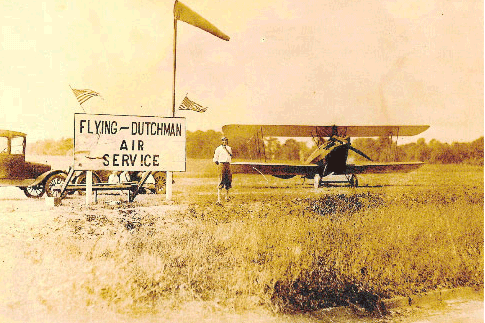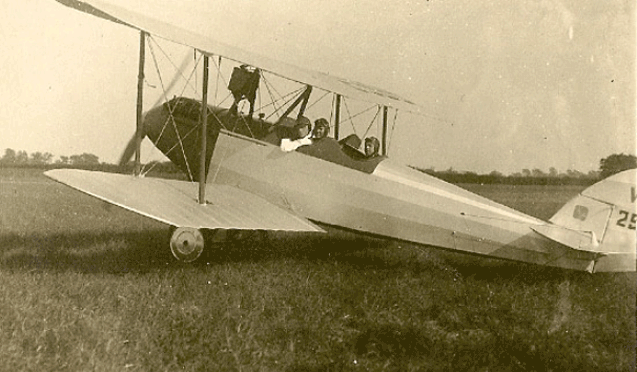
Exactly
50 years before Martin Luther King, Jr., delivered his
famous “I Have A Dream” speech, an intrepid
young man, aged thirty-one, became the first licensed
African American aviator. The odds are you don't
even know his name.
As we celebrate Black
History Month, it seems the enormity of “black
history” continues to unfold and reveal itself.
Today we explore what for us was a startling revelation:
a virtually unknown man with claims to several aviation
firsts. His accomplishments are not only noteworthy
because he was a person of color, but also for their
influence in advancing the history of aviation.
Emory Conrad Malick, born
on December 29, 1881, in Northumberland County, PA,
had high-flying dreams from the early years of his life.
A carpenter and aviation
enthusiast, Emory combined his love of the latter with
his expertise in the former, building his own gliders
to fly to his job as a farmhand at Cattie Weiser’s
farm, just across the Susquehanna River (Emory and his
father also installed the mahogany veneering in the
Pennsylvania Railroad’s dining cars). According
to his great niece, Mary Groce, who has compiled a fantastic
website enumerating her great uncle’s many accomplishments
(and to whom we owe many thanks for her help and research
in this article), Emory’s first recorded flight
was on “July 24, 1911… in an engine-powered
‘aeroplane,’ which took place in Seven Points
(PA).”
On March 20, 1912, Emory
became the first licensed African American aviator,
receiving his F.A.I. (Federation Aeronautique Internationale)
license #105, after learning to fly at the Curtiss Aviation
School in San Diego, CA.
Mr. Malick was also the
first African American pilot to earn his Federal Airline
Transport License, #1716, issued on April 30, 1927.
In the summer of 1914,
according to Glenn Curtiss Museum records in Hammondsport,
New York, Emory “obtained, assembled—and
improved upon—his own Curtiss ‘pusher’
biplane, which he flew over Selinsgrove, Pennsylvania,
‘to the wonderment of all!’” Local
factories were shut down so workers could witness the
aerial wonder—the first human to cut the clouds
over central PA.
The
Flying Dutchman
 By early 1918, Emory was at
work in Philadelphia, transporting passengers on joyrides
up into the air and to nearby destinations. He piloted
a Waco 9 (an early and quite excellent all-metal bi-plane
with a reliable Curtiss OX5 engine and two places for
passengers) for the Flying Dutchman Air Service. By early 1918, Emory was at
work in Philadelphia, transporting passengers on joyrides
up into the air and to nearby destinations. He piloted
a Waco 9 (an early and quite excellent all-metal bi-plane
with a reliable Curtiss OX5 engine and two places for
passengers) for the Flying Dutchman Air Service.
Interestingly, KLM in Holland was founded October 1,
1919, and flights from Amsterdam all the way to Batavia
(Indonesia) became known as the “Route of the
Flying Dutchmen.”
Emory’s records
state that he actually established the Flying Dutchman
Air Service with Ernie Buehl, a former German pilot
who was remembered for having taught and encouraged
black pilots, including Charles Alfred Anderson.
Date
With Eleanor Roosevelt
An important historical point
of that era is that “Chief” Anderson later
flew for Eleanor Roosevelt, who was quickly impressed
with his abilities. She of course convinced her husband,
Franklin Delano Roosevelt, that African Americans were
beyond skilled enough to fly for the United States during
World War II, and it was the “Chief” who
then became the Chief Flight instructor for the Tuskegee
Airmen.
The
Complete Package
Emory was a triple threat:
a pilot, a mechanic, and an engineer, and to add to
his list of accomplishments as a dreamer, he was also
an aerial photographer for the Aero Service Corporation
and Dalin Aerial Surveys.
Emory retired from the
skies after May 20, 1928, when an unfortunate crash
killed a passenger and left his eyes so seriously injured
that he was officially grounded, and lost his Federal
Transport License. When asked to participate in a flight,
he said, “I’ve had my fun, and now I’m
done.”
History
Misguided
At the 1928 dedication of the
Sunbury Airport, which straddled the Susquehanna River
over which Emory Malick used to glide to work in Sunbury,
PA, Emory, the first and arguably greatest pilot of
his era, was overlooked in favor of out-of-towner Wesley
Smith, to whom the airport was dedicated.
The snub was recalled
in a local newspaper, which stated that Emory should
have been the focus of the dedication; after all, it
was Emory’s engine—the same engine that
had first flown over the city and had been thus far
stored in his father’s basement—which the
Sunbury Airport put on display for the dedication.
History
Lost
In late December 1958, at 77
years old, Emory Conrad Malick slipped on an icy sidewalk,
fell, and hit his head. He was found unconscious and
rushed to the hospital, but it was too late. Sadly,
he remained unidentified in the morgue for over a month
before the FBI was able to track down his sister, Annie.
Great
Niece
All information on Emory C.
Malick has been carefully and lovingly gathered through
the slow uncovering and tireless research conducted
by his great-niece, Mary Groce. She believes—correctly—that
Emory Malick has earned his rightful place as the first
licensed African American pilot. She says, “Even
though Emory was my grandmother’s brother, I was
never told about him, and only recently found information
and photos hidden away in attic boxes. In my journey
to uncover his story, I learned the sad (but, thankfully,
only partial) truth in words spoken to me by a very
old, white, retired Air Force pilot: ‘Hey, he
was an out-of-towner, and he was black. Of course no
one saved any record of him!’” We would
argue that his “record” can be found in
the immense and indelible effect he had on the history
of African Americans in aviation—from the humble
beginnings of a man gliding over a river to work, to
the indispensable service of the Tuskegee Airmen. Without
Emory, crucial links would be severed, and vital historic
events would simply cease to exist.
Black
Into White
Interestingly, Mary Groce’s
grandmother, Annie, who identified her brother’s
body, was put up for adoption at a very young age, along
with her sister, Cora.
 Annie was apparently “light
skinned” and effectively “passing for white,”
was adopted by a white family. Annie was apparently “light
skinned” and effectively “passing for white,”
was adopted by a white family.
It was only after perusing
some old family documents that Mary Groce discovered
her hidden family heritage, and her connection to the
first African American pilot of the United States.
Mary spoke on February
20, about E. C. Malick during the Sixth Annual Celebration
of Black Aviation at the American Airlines C.R. Smith
Museum auditorium, Fort Worth, Texas, She is still working
on a biography of her great uncle, but her children’s
books about E. C. Malick, in Kindle form, are now on Amazon.com,
titled “Emory Conrad Malick, Our First Licensed
Black Pilot.” by Buckadee (Mary Groce).
She says that “sharing
the story of E. C. Malick” is “her grand
passion” and welcomes and encourages anyone with
information about her great uncle to contact her at MsMaryGroce@aol.com.
You can read more about Emory
Malick at www.emoryconradmalick.com
Flossie

Emory Conrad Malick
pictured in his Waco 9.
|
A postscript:
Emory’s Waco 9 sat
parked in a hangar in Schwenksville PA for several years
after Emory stopped flying and was scrapped in 1934.
Today there are at least
a dozen examples of this excellent (270 built) aircraft,
which a black man helped prove airworthy in steady service.
After the Waco 9, the
greatest bi-plane ever, the Waco 10 (1623 built during
1930s) arrived. A completely updated version is still
being built today and mostly available at a smaller
airport near you for joyrides all summer
|





